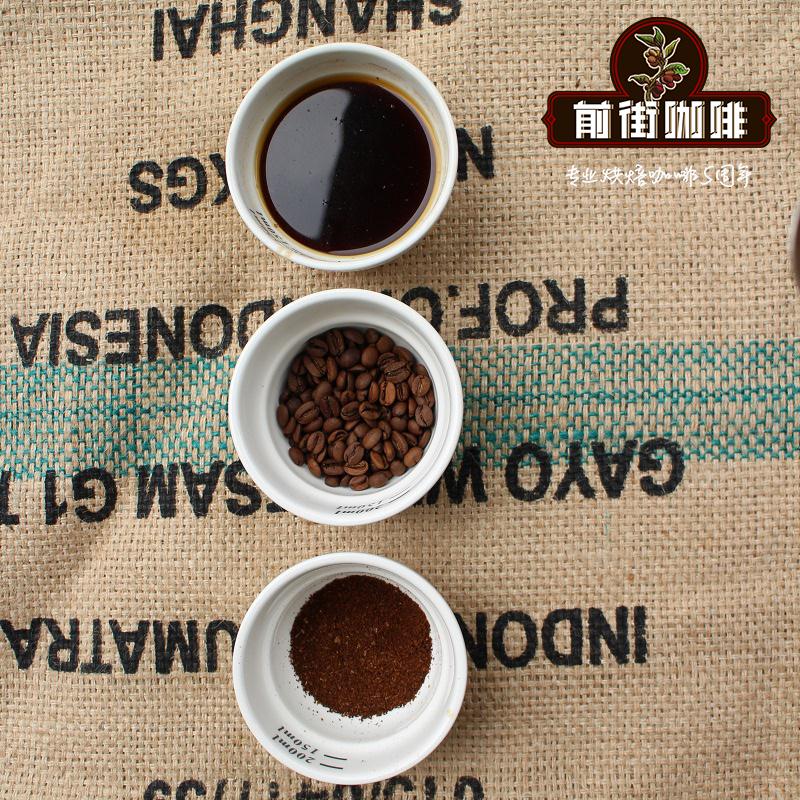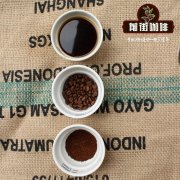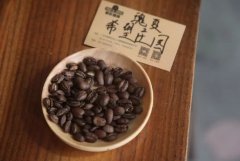Bolivian coffee flavor describes what is "tomorrow Sun Project" and Bolivian COE
Bolivian coffee beans are concentrated in rural areas of Yungas, with about 95 per cent of production. Other developing regions include Santa Cruz, Beni, Cochabamba, Tariha and Pando. Despite the existence of commercial farms and estates, the Government's land reform has expropriated most of the large land and redistributed it to rural families. These small plots of land cover an area of 1-8 hectares and produce 85-95% of Bolivian coffee, most of which are Arabica coffee, organically grown.
Bolivia's "tomorrow Sun Project", that is, the plan to comprehensively promote Bolivian coffee, requires a lot of money and effort to coach small farmers, including technical support, breeding, pruning, harvesting and other important technology. and buy small farmers' coffee at high prices, so that farmers' income is the same as the quality of coffee and enter a good cycle.
The most famous producing area in Bolivia is Caravani, the most famous of which is Yongas Road, the world's most dangerous road nicknamed the Road of death, which was named "the most dangerous road in the world" by the Inter-American Development Bank in 1995.
For the past three decades, Pedro Rodriguez (Pedro Rodriguez) has been working to bring Bolivian coffee beans around the world. Although Bolivia has the ideal conditions for growing boutique coffee, years of agricultural challenges and failures have convinced many farmers that the dream of success and prosperity is out of reach. In order to face the difficulties head on, Pedro bought his own land, sent his children to agricultural schools, and set up coffee plantations for education and demonstration. In 2014, he launched the tomorrow Sun Project, which aims to educate growers to grow high-quality Bolivian coffee beans with a responsible attitude and sustainable economy.
Bolivia is one of the five most diverse countries in the world. It is a landlocked country surrounded by five countries and deeply affected by it. It has a population of more than 1000. The indigenous Indians, who account for about 60% of the total population, are divided into 36 ethnic groups. Mixed Indo-European (Mestizo) accounts for 26%, in addition to 100 European and other ethnic groups. There are Illmani peaks up to 6462 meters above sea level, Lake Titicaca, the highest and navigable alpine lake in the world, and tropical rain forests! Such a variety of terrain can be said to be a paradise for fine coffee micro-batches. However, the production of Bolivian coffee is declining year by year.
From 1997 to 2014, the export volume dropped to only 1 stroke 4 every year. According to Roast Magazine, its coffee production ranked 38th and even ranked 35th in the United States. Fine micro-batches of Bolivian coffee can be said to be very precious and hard to find. This is due to the backward economic development and infrastructure of Bolivia, which is still the poorest country in South America. In addition, due to the unique and changeable terrain, Bolivia has become a key factor in coffee processing, transportation and quality killer because of poor infrastructure.
Compared with other Latin American countries such as Brazil, Colombia, Costa Rica and Guatemala, Bolivia produces very small amounts of coffee. The specialty coffee industry began to develop in the 1990s and 21st century, when foreign aid-funded development projects set up coffee washing plants and provided farmers with training programs on how to harvest and dry coffee correctly, so that only good beans can be selected. prevent fermentation and maintain quality. The highlight of these coffee training programs was the COE Competition held in Bolivia from 2004 to 2009. This famous project trained farmers in quality control techniques and invited international coffee judges to choose the best Bolivian coffee beans. Jorge Valverde is the coordinator of the COE Program in Bolivia from 2007 to 2009.
Unfortunately, the Bolivian COE project was cancelled after the competition in 2009 because the Bolivian Government was very anti-American and did not want the United States Agency for International Development (USAID) to finance any more development plans in Bolivia, and there were no other plans. The source of funding for the COE project.
Altitude: 1600-1650m
Flavor: dry aromas of lemon peel, roasted almonds, caramel and flowers, citrus, lemon peel, fresh blueberries and flowers, clean and elegant.

Important Notice :
前街咖啡 FrontStreet Coffee has moved to new addredd:
FrontStreet Coffee Address: 315,Donghua East Road,GuangZhou
Tel:020 38364473
- Prev

Bolivian Javanese flavor description of Bolivian manor features
Bolivia is one of the poorest countries in Latin America, a landlocked country bordering Brazil and Colombia. Although it is a country with great potential for coffee exports, its production has been quite scarce and the conditions for growing coffee are excellent, but the challenges are also extremely daunting, resulting in an extraordinarily rich agricultural history built on a very difficult land. Bolivir
- Next

How should Columbia hope manor rosy summer coffee drink? Suggestions for brewing Rosa Coffee
A few days ago, we had a rosy summer from Hope Manor in Colombia. when tested, the bean had sweet orange, lime, honey, cream, oolong tea and jasmine fragrance. The flavor characteristics of cooking with different water temperatures are also different. I don't know what kind of surprise this bean will bring us under different filter cups. | | Bean information |
Related
- Detailed explanation of Jadeite planting Land in Panamanian Jadeite Manor introduction to the grading system of Jadeite competitive bidding, Red bid, Green bid and Rose Summer
- Story of Coffee planting in Brenka region of Costa Rica Stonehenge Manor anaerobic heavy honey treatment of flavor mouth
- What's on the barrel of Blue Mountain Coffee beans?
- Can American coffee also pull flowers? How to use hot American style to pull out a good-looking pattern?
- Can you make a cold extract with coffee beans? What is the right proportion for cold-extracted coffee formula?
- Indonesian PWN Gold Mandrine Coffee Origin Features Flavor How to Chong? Mandolin coffee is American.
- A brief introduction to the flavor characteristics of Brazilian yellow bourbon coffee beans
- What is the effect of different water quality on the flavor of cold-extracted coffee? What kind of water is best for brewing coffee?
- Why do you think of Rose Summer whenever you mention Panamanian coffee?
- Introduction to the characteristics of authentic blue mountain coffee bean producing areas? What is the CIB Coffee Authority in Jamaica?

